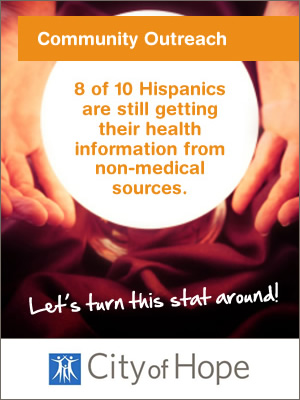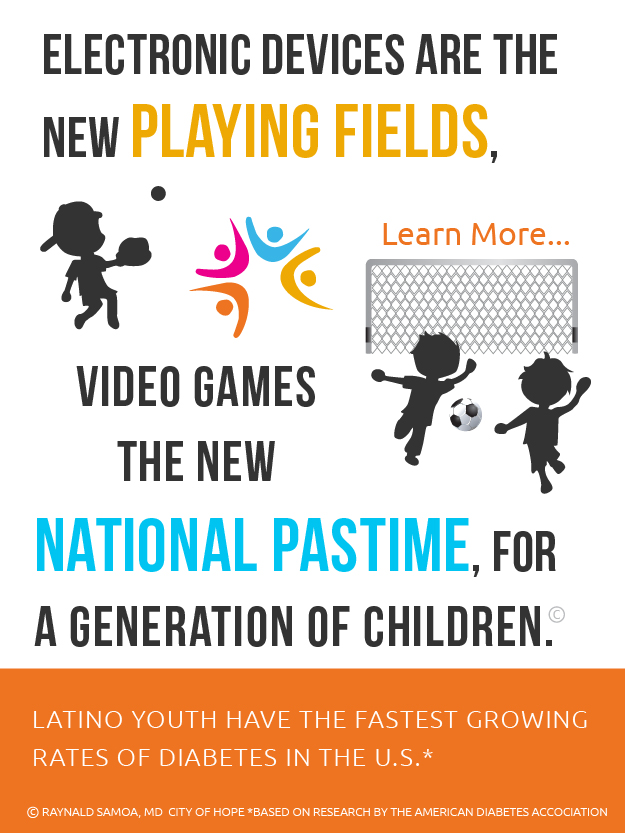
Cultural Values of Latino Patients and Families
08/25/2015 11:00AM | 29324 viewsFailure to understand and respond appropriately to the normative cultural values of patients can have a variety of adverse clinical consequences: reduced participation in preventive screenings, delayed immunizations, inaccurate histories, use of harmful remedies, non-compliance, and decreased satisfaction with care to name a few. A primary challenge in working with patients from different cultural backgrounds is being able to use cultural generalizations appropriately without losing sight of the individual patient/family. To succeed in this challenge, clinicians must keep in mind that variations occur between cultural subgroups just as individuals subscribe to group norms to varying degrees. Factors such as socio-economics, education, degree of acculturation and English proficiency have an enormous impact on a person’s health beliefs and behaviors.
In this article we will take a look at Latino culture specifically, keeping in mind that a wealthy Cuban American who has been in the United States for many years will likely have cultural values that are markedly different from a recent immigrant to the US from Mexico.
Definitions: Latino vs. Hispanic
The term Latino denotes all persons living in the United States whose origins can be traced to the Spanish-speaking regions of Latin American, including the Caribbean, Mexico, Central American, and South America. ( Flores 2000) The term Hispanic was created by the U.S. federal government in the early 1970s in an attempt to provide a common denominator to a large and highly diverse population with connection to the Spanish Language. It is often considered a somewhat narrow indicator by those who prefer the term Latino. Interestingly, “Hispanics” are a race to the United States Department of Justice when it enforces provisions of the civil rights laws, but Hispanics are not a race to the Bureau of the Census.
A Collectivist Culture With Strong Family Values (Familismo)
Latinos tend to be highly group-oriented. A strong emphasis is placed on family as the major source of one’s identity and protection against the hardships of life. This sense of family belonging is intense and limited to family and close friends. People who are not family or close friends are often slow to be given trust. The family model is an extended one; grandparents, aunts, cousins, and even people who are not biologically related may be considered part of the immediate family. The term Latinos use to describe their supreme collective loyalty to extended family is familismo. Financial support of the family by the individual and vice versa is important and expected. The decisions and behavior of each individual in the extended family are based largely on pleasing the family; decisions are not to be made by the individual without consulting the family. Failure of the clinician to recognize familismo can potentially lead to conflicts, non-compliance, dissatisfaction with care and poor continuity of care. Familismo can delay important medical decisions because extended family consultation can be time consuming. To gain the trust and confidence of the Latino patient/parent, it is important to solicit opinions from other family members who may be present and give ample time for the extended family to discuss important medical decisions.
A Hierarchical Culture That Values Respecto
The term power distance is used in the field of intercultural communications to compare the extent to which less powerful members of a society accept that power is distributed unequally. When power distance in a society is high, people tend to believe that everyone has their rightful place and they understand that not everyone is treated equally. When power distance is low, people believe that everyone should have equal rights and the opportunity to change their position in society. In Latin American cultures, people tend to expect status differences between members of a society which is very different from U.S. American culture. Latinos place a high value on demonstrating respecto in interactions with others, which literally translates into respect. Respecto means that each person is expected to defer to those who are in a position of authority because of age, gender, social position, title, economic status, etc. Healthcare providers, and doctors especially, are viewed as authority figures. Thus, Latino patients/parents will tend to demonstrate respecto in healthcare encounters. They may be hesitant to ask questions or raise concerns about a doctor’s recommendations, being fearful that doing so might be perceived as disrespectful. They may nod to demonstrate careful listening and respect when a doctor is talking, rather than agreement about treatment.
Respecto is also expected on a reciprocal basis by Latinos when dealing with healthcare professionals. This is especially the case when a young doctor is treating an older Latino patient. It is important to approach Latino patients/parents in a somewhat formal manner, using appropriate titles of respect (Senor [Mr.] and Senora [Mrs.] and appropriate greetings [good morning or good afternoon]. This is especially true with older Latinos. U.S. Americans are recognized the world over as being highly informal. We jump to a first name basis with strangers almost immediately, signaling a collapse of status differences by doing so. Good intentions aside, people from many traditional cultures will not appreciate this informality. It will make them uncomfortable and may even be seen as rude behavior in certain situations.
Hierarchy in Latino Families
Latino families are often stratified based on age and sex. Generational hierarchy is expected – grandparent, child, grandchild. The oldest male (direct relative) holds the greatest power in most families and may make health decisions for others in the family. Latino men traditionally follow the ideal of machismo. They are expected to be providers who maintain the integrity of the family unit and uphold the honor of family members. Many Latino females, at least publically, are expected to manifest respect and even submission to their husbands, though this compliance varies by individual and is affected by acculturation in the U.S. Women follow the ideal of marianismo which refers to the high value Latino women place on being dedicated, loving and supportive wives and mothers. They are responsible for teaching Latino children culture and religion and for being ready to help those in need both in the family and community. It bears repeating that upward mobility, education and other societal factors are changing the above, but in isolated communities and among new immigrants, little has changed.
Latinos and Uncertainty Avoidance/Fatalismo
“A basic fact of life is that time goes only one way. We are caught in a present that is just an infinitesimal borderline between past and future. We have to live with a future that moves away as fast as we try to approach it, but onto which we project out present hopes and fears. In other words, we are living with an uncertainty of which we are conscious.” (Hofstede 2001)
Because human beings display a variety of cultural attitudes about controlling external forces, our attitudes about time, destiny and fate can be dramatically different. In US American culture, we struggle to accept things as they are which creates high levels of stress and anxiety in our lives. Our inner urge to be busy is directly correlated to a need to control life’s uncertainty and feelings of powerlessness toward external forces. We focus on the individual as the locus of control in decision making and put little faith in fate or karma. We also exhibit an adversarial relationship to time, constantly needing to control the time shortage we face. We believe that multi-tasking is an important skill to develop and we rely heavily on technologies to help us do things like check our email while eating breakfast.
Latinos, by comparison, often have a strong belief that uncertainty is inherent in life and each day is taken as it comes. The term fatalismo is often used by Latinos to express their belief that the individual can do little to alter fate. This mindset manifests in health beliefs and behaviors in significant ways. Latino patients are more likely than whites to believe that having a chronic disease like cancer is a death sentence. They may prefer not to know if they have cancer, and may believe that cancer is God’s punishment. As a result of fatalismo, Latino patients may be less likely to seek preventive screenings and may delay visiting a western doctor until symptoms become severe. They may avoid effective therapies for cancer and other chronic diseases, especially radical new treatments and invasive procedures. (Flores 2000)
It makes sense that a culture tolerant of uncertainty tends to have a relaxed attitude towards time. Many Latinos definitely treat time as flexible and do not value punctuality the way their healthcare providers may expect them to. In fact, within the Latino community, not being on time is a socially accepted behavior. This explains a tendency for Latino patients/parents to show up late for healthcare appointments fully expecting to be able to see their provider. Similarly, Latinos are more accepting of certain levels of chaos and don’t expect orderly processes. The western medical model, with its focus on data gathering and tracking, and its insistence on adhering to specific appointment procedures, may seem unduly regimented to less acculturated Latinos, especially those who are new immigrants.
Task vs. Relationship/Simpatia and Personalismo
If U.S. Americans are time and task-oriented, Latinos tend to be more focused on relationship. The word simpatia means “kindness” and refers to an emphasis on politeness and pleasantness even in the face of stress. Latinos expect that healthcare providers demonstrate simpatia and personalismo which translates into “formal friendliness.” Latinos may read the neutral or businesslike affect of western doctors as negative. If the physician seems hurried, detached and aloof, the Latino patient/parent may experience resentment and be dissatisfied with care. This of course reduces the likelihood of compliance with the doctor’s recommendations for treatment and follow-up. A physician should be attentive, take their time, show respect, and if possible communicate in Spanish. Physical gestures such as handshakes or even placing a hand on the shoulder help to communicate warmth. Latinos also expect their healthcare provider to exhibit confidence.
Conclusion
Healthcare providers need to be familiar with the normative cultural values affecting interactions with their patients from different cultures. While it is impossible to know everything about every culture, clinicians can learn about important cultural values by using published references, consulting colleagues from other ethnic groups, and speaking to interpreters and community members. It is also important to learn to ask patients questions in a culturally sensitive way, understanding that fear of making mistakes in communicating with them blocks the exchange of vital information.
The information provided here about Latino culture is meant to assist clinicians by providing a general framework. No hard and fast rules about interacting with Latino patients and families are being offered because they would lead to stereotyping. A cross-cultural mindset requires understanding one’s own health beliefs and behaviors first and then applying that baseline of understanding as a means of making effective comparisons across cultures. Clinicians should keep in mind that individuals subscribe to group norms to varying degrees. Factors such as socio-economics, education, degree of acculturation and English proficiency have an enormous impact on an individual’s health beliefs and behaviors. All these factors challenge one’s ability to understand and treat patients in cross-cultural settings, but meeting those challenges can be vital in reducing health disparities for Latino Americans in the U.S.
Sources Referenced for this Article
1. Hofstede, GH. Cultures Consequences. Second Edition 2001
2. Flores G. Vega LR. Barriers to Health Access for Latino Children: a review. Family Med 1998:30:196205
3. www3.Baylor.edu/Charles_Kemp/Hispanic_health.htm
“Cultural Values of Latino Patients and Families” by Marcia Carteret. © Copyright 2011. All rights reserved.











Post your Comment
Please login or sign up to comment
Comments